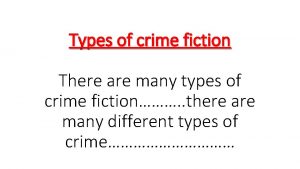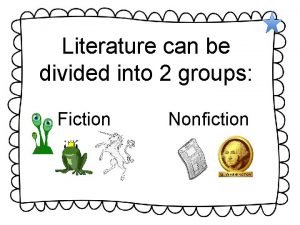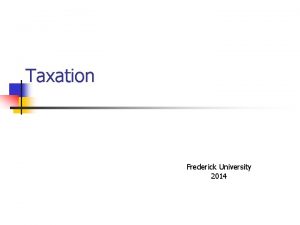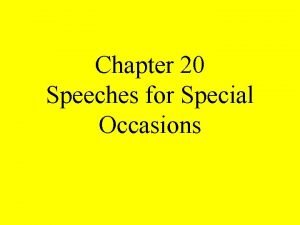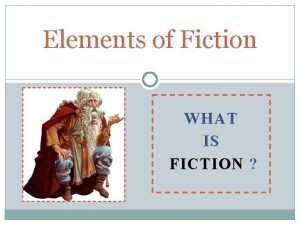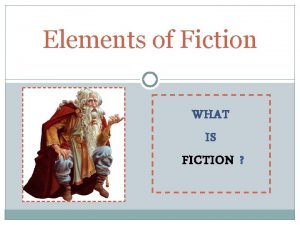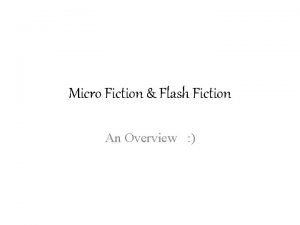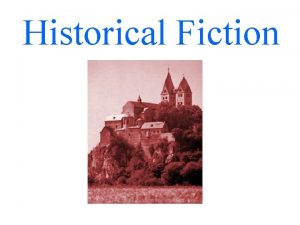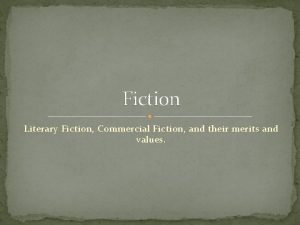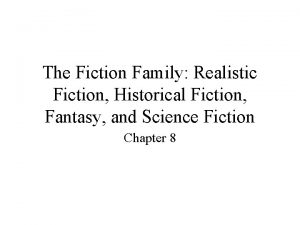Types of crime fiction There are many types















- Slides: 15

Types of crime fiction There are many types of crime fiction………. . there are many different types of crime……………

The cozy mystery: a subgenre of detective fiction in which profanity, sex, and violence are downplayed or treated humorously.

The locked room mystery: a specialized kind of a whodunit in which the crime is committed under apparently impossible circumstances, such as a locked room which no intruder could have entered or left.

The whodunit: the most common form of detective fiction. It features a complex, plotdriven story in which the reader is provided with clues from which the identity of the perpetrator of the crime may be deduced before the solution is revealed at the end of the book.

The historical whodunnit: also a subgenre of historical fiction. The setting of the story and the crime has some historical significance

The inverted detective story: also known as "howcatchem", the commission of the crime and the identity of the perpetrator is revealed to the reader first, then the rest of the story describes the detective's attempt to solve the mystery.

The American hardboiled school: distinguished by the unsentimental portrayal of sex and violence; the sleuth usually also confronts danger and engages in violence.

The police procedural: the detective is a member of the police, and thus the activities of a police force are usually convincingly depicted.

The legal thriller: the major characters are lawyers and their employees, and they become involved in proving their cases.

The spy novel: the major characters are spies, usually working for an intelligence agency.

The caper story and the criminal novel: the stories are told from the point of view of the criminals.

The psychological thriller or psychological suspense: this specific subgenre of the thriller genre also incorporates elements from detective fiction, as the protagonist must solve the mystery of the psychological conflict presented in these types of stories.

A heist film is a subgenre to a Crime film. It focuses on the planning, execution, and aftermath of a theft. Versions with dominant or prominent comic elements are often called caper movies. They could be described as the analogues of caper stories in film history. A typical film includes many plot twists, with the focus on the characters' attempts to formulate a plan, carry it out, and escape with the goods. Often anemesis must be thwarted, who might be either a figure of authority or else a former partner who turned on the group or one of its members

More on the Heist……………. Usually a heist film will contain a three-act plot. The first act usually consists of the preparations for the heist: gathering conspirators; learning about the layout of the location to be robbed; learning about the alarm system; revealing innovative technologies to be used; and, most importantly, setting up the plot twists in the final act. The second act is the heist itself. With rare exception, the heist will be successful, although some number of unexpected events will occur. The third act is the unravelling of the plot. The characters involved in the heist will be turned against one another or one of the characters will have made arrangements with some outside party, who will interfere (often a wise, underestimated detective). Normally, most of or all the characters involved in the heist will end up dead, captured by the law, or without any of the loot; however, it is becoming increasingly common for the conspirators to be successful, particularly if the target is portrayed as being of low moral standing, such as casinos, corrupt organizations or individuals, or fellow criminals. As an established archetype, it became common, starting in the 1950 s, to excise one or two of the acts in the story, relying on the viewers' familiarity with the archetype to fill in the missing elements. Touchez pas au grisbi and Reservoir Dogs, for example, both take place largely after the heist has occurred. Examples of heist films that take place non-linearly: The Killing (1956); Gambit (1966); Reservoir Dogs (1992)

Some novels may combine elements from a range of these genres
 Insidan region jh
Insidan region jh Types of crime fiction
Types of crime fiction It is a genre of speculative fiction
It is a genre of speculative fiction What is fiction
What is fiction Contemporary realism literature
Contemporary realism literature Fictional character examples
Fictional character examples Work is change in energy
Work is change in energy Different forms of love
Different forms of love How many types of engineering are there
How many types of engineering are there How many types of sentences are there? *
How many types of sentences are there? * How many types of formal letters are there
How many types of formal letters are there How many types of taxes are there
How many types of taxes are there How many types of motion are there in mechanical devices
How many types of motion are there in mechanical devices Commerative speech
Commerative speech How many types of credit are there?
How many types of credit are there? There are many different kinds of sports
There are many different kinds of sports

